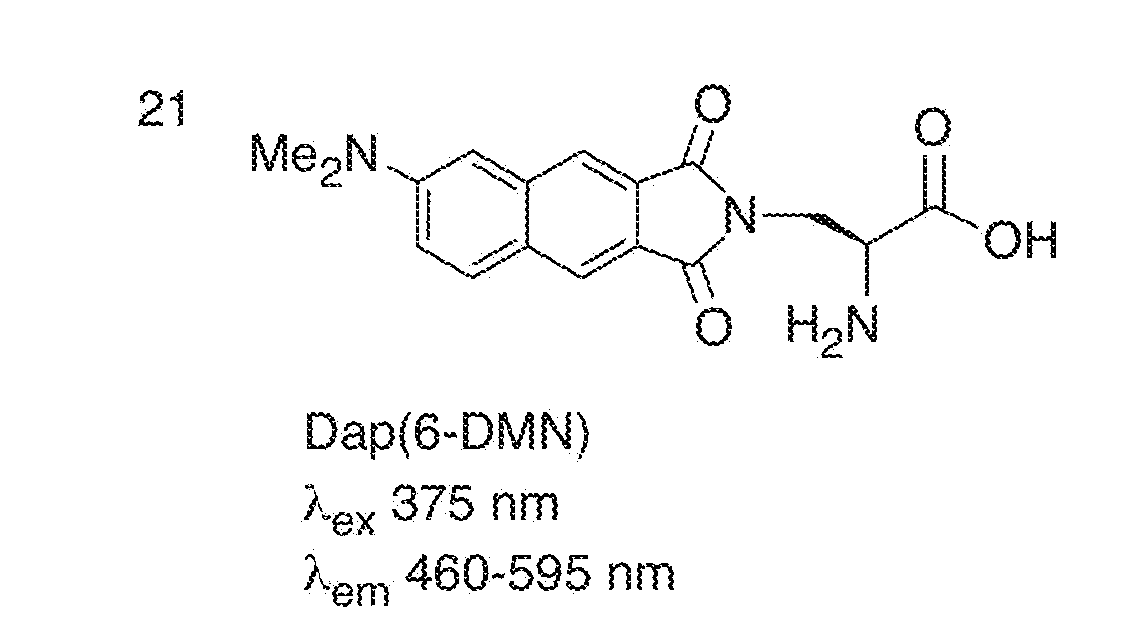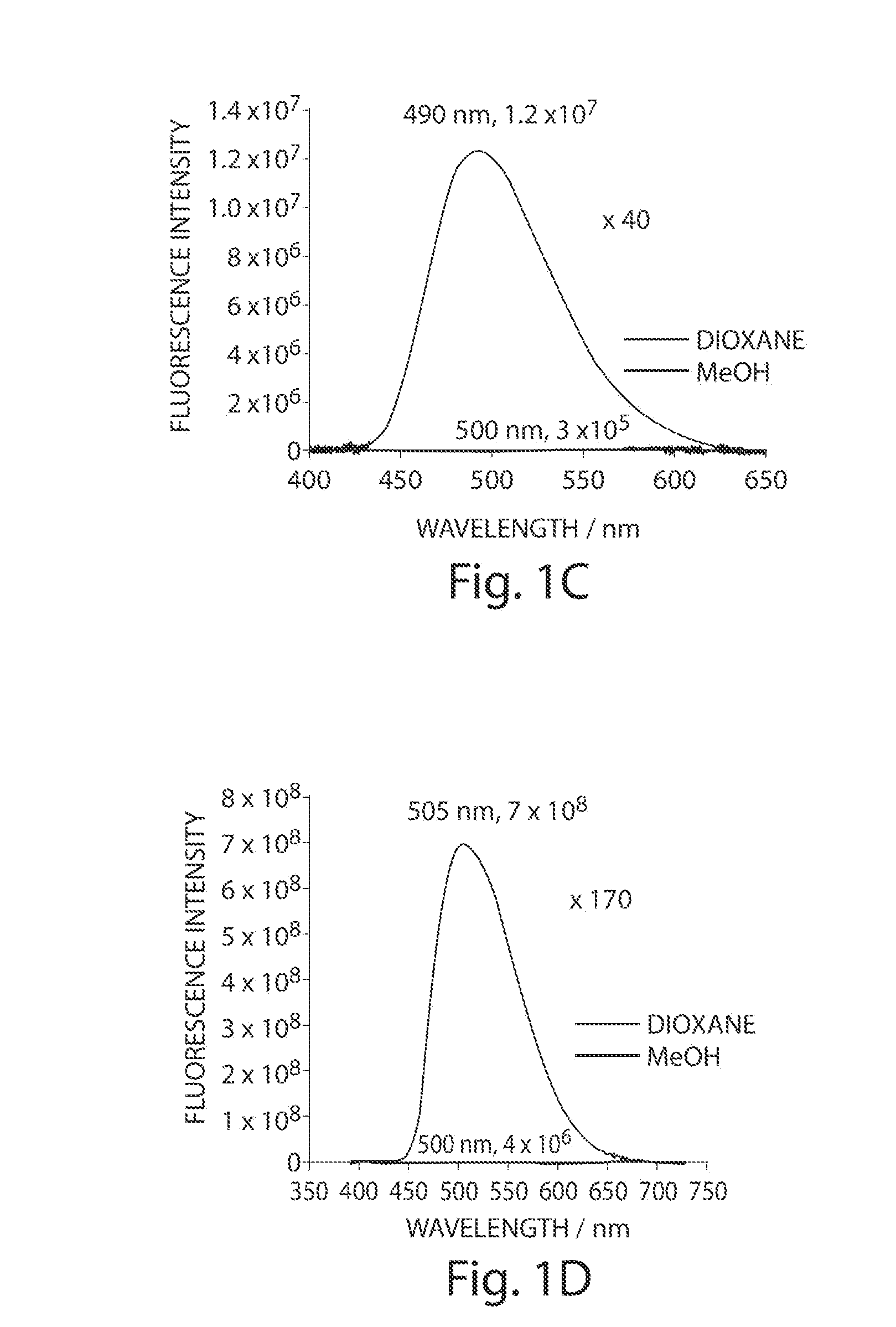Environmentally sensitive fluorophores
- Summary
- Abstract
- Description
- Claims
- Application Information
AI Technical Summary
Benefits of technology
Problems solved by technology
Method used
Image
Examples
example 1
[0112]This example illustrates the synthesis of 4-DMN, which is similar to that of 6-DMN. See, for example, the synthesis method set forth in U.S. patent application Ser. No. 11 / 106,349, filed Apr. 13, 2005, entitled “Fluorescent Probes for Biological Studies,” by B. Imperiali, et al., published as U.S. Patent Application Publication No. 2006 / 0234206 on Oct. 19, 2006, the entirety of which is herein incorporated by reference.
[0113]FIG. 1 illustrates the structures of the Dap(6-DMN) (FIG. 1A) and Dap(4-DMN) (FIG. 1B), the fluorescence excitation and emission maxima, and the changes in fluorescence spectra in methanol and dioxane for the two compounds (FIGS. 1C and 1D, respectively). The latter are indicative of the large changes that can be achieved for signaling protein / protein and peptide / protein interactions when the 4-DMN group is integrated to one of the binding partners either as an amino acid (e.g. 22) or via chemical modification of a cysteine in one of the sequences. The flu...
example 2
[0117]Since their introduction, derivatives of the 7-nitrobenz-2-oxa-1,3-diazole (NBD) and dansyl fluorophores (FIGS. 3A-3B) have been used extensively in the areas of cell biology and protein biochemistry. Both exhibit high fluorescence quantum yields in hydrophobic environments compared to the lower fluorescence yields observed in hydrophilic environments such as buffered water. This permits the possibility to probe the dynamics of many biological macromolecules that can undergo dramatic allosteric changes in tertiary structure or participate in highly regulated interactions with other macromolecules. Such processes can often result in the creation or elimination of hydrophobic microenvironments, which may readily be detected by a strategically placed environment sensitive fluorophore. However, both of these fluorophores possess characteristics that limit their application in the field of fluorescence microscopy. For instance, the wavelength of maximum excitation of dansyl is belo...
example 3
[0119]The 4DMAP and 6DMN fluorophores are likely susceptible to the gradual hydrolysis of the imide ring system in the pH range of 7 to 8. The origin of this reactivity can be attributed to the bond angle strain of the five-membered imide ring system that is released during the ring opening process. By comparison, the 4DMN fluorophore, which possesses a six-membered imide ring system, exhibited no such reactivity. This is apparent in an experiment performed on both the KR4DMAP and KR4DMN peptides using a PerkinElmer HTS7000 plate reader. Fluorescence of the two peptides was measured at their respective emission wavelengths in PBS buffer over a 24 hour period at 28° C. The 4DMAP fluorophore did not appear to be fluorescent in the hydrolyzed state allowing its degradation to be quantified over time. As shown in FIGS. 6A-6B, the rate of hydrolysis appeared to be significantly enhanced at pH 8.
[0120]When the same study was performed on the KR4DMN peptide, no significant change in fluore...
PUM
| Property | Measurement | Unit |
|---|---|---|
| Sensitivity | aaaaa | aaaaa |
| Chemicophysical properties | aaaaa | aaaaa |
| Interaction | aaaaa | aaaaa |
Abstract
Description
Claims
Application Information
 Login to View More
Login to View More - R&D
- Intellectual Property
- Life Sciences
- Materials
- Tech Scout
- Unparalleled Data Quality
- Higher Quality Content
- 60% Fewer Hallucinations
Browse by: Latest US Patents, China's latest patents, Technical Efficacy Thesaurus, Application Domain, Technology Topic, Popular Technical Reports.
© 2025 PatSnap. All rights reserved.Legal|Privacy policy|Modern Slavery Act Transparency Statement|Sitemap|About US| Contact US: help@patsnap.com



